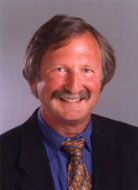 Headaches are a major source of chronic pain. Although most people get an occasional headache, as many as 45 million Americans get them on a regular basis. Headache related lost work and medical expenses costs $50 billion per year in the U.S. alone. Over $4 billion a year is spent on over-the-counter headache relievers. Headaches are problematic in about 10 to 18 percent of the general population, and 10 percent of patients identified headache as the reason for their doctor visits.
Headaches are a major source of chronic pain. Although most people get an occasional headache, as many as 45 million Americans get them on a regular basis. Headache related lost work and medical expenses costs $50 billion per year in the U.S. alone. Over $4 billion a year is spent on over-the-counter headache relievers. Headaches are problematic in about 10 to 18 percent of the general population, and 10 percent of patients identified headache as the reason for their doctor visits.
Tension Headaches
Tension headaches account for about three quarters of all headaches. They cause moderate pain on both sides of, and across, the forehead, tend to both start and fade away gradually, and are the result of muscle tightness coming from the SCM (sterno-cleidomastoid) muscles in the neck. These muscles begin behind the bottom of the ear and come around the neck to the top of the collar bone (clavicle). They are the muscles that turn your head from side to side. With tension headaches you can often find a tender knot right in the middle of the muscle. This knot, called a “trigger point,” refers pain and tenderness to the sides of your forehead (the temple area), and then sends the pain across your forehead. Although putting a hot compress or the pain creams on the temples and across the forehead may help temporarily, they are more effective when placed over the tender knots in the muscles on both sides of the neck.
Occasionally, tension headaches are felt at the base of the skull, on the top of the head, and/or behind the eyes. For these headaches, the pain is often coming from the muscles where they attach to the base of the skull at the top of the back of your neck. If you push on those muscles (called the sub-occipital muscles) where they attach at the base of the skull during a headache, they will be very tender and can make the headache better or worse. When the pain is reproduced by pushing on the area, you know that these muscles are part of the source of that headache. If this is the case, use heat and the pain creams over those tender areas.
How Can I Make the Headaches Go Away and Stay Away?
Because tension headaches are muscular, the same treatments that cause your muscles to relax will often eliminate the recurrence of these headaches—permanently! These are nutritional support, hormonal support, getting at least eight hours of sleep at night, and treating underlying infections. Paying attention to structural factors and eliminating annoying stresses in your life can also help. I call the metabolic approaches to treating muscle tightness the “SHIN Protocol”. Here’s how to treat them.
1) Disordered sleep. Many people with headaches and muscle pain find that they are unable to get 7-8 hours of deep sleep a night without taking medications. For muscle pain to go away, it is critical that you get 8 to 9 hours sleep at night! Helpful medications include Ambien, Desyrel, Klonopin, Flexeril and/or Elavil. In addition, natural remedies can help sleep. An excellent one (which I developed -Revitalizing Sleep Formula by Enzymatic Therapy -- 100 percent of my royalty for all products I develop is donated to charity) includes theanine, Jamaican Dogwood, wild lettuce, valerian, passionflower, and hops. These are also powerfully effective muscle relaxants as well. Other natural sleep aids include Calcium and Magnesium, 5-HTP (100-300mg), and melatonin (3/10-1mg). Some patients find that over-the-counter antihistamines such as doxylamine (Unisom for sleep) or Benadryl can also help.